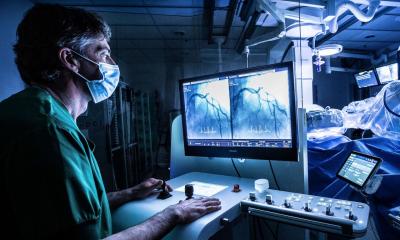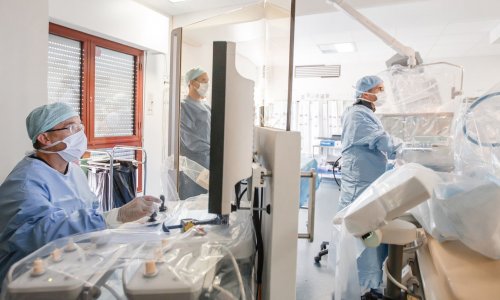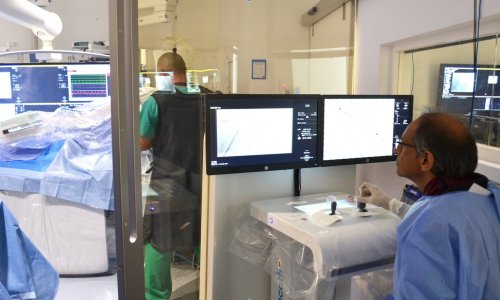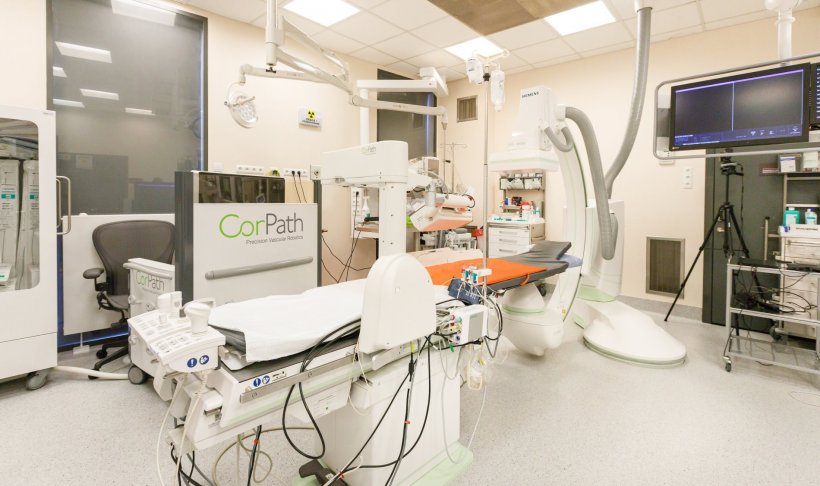
Article • Cardiology helpers
A new era for robotic cardiac interventions
Interventional cardiology is entering a new era with the wider introduction of robotic procedures which bring significant benefits to the medical team and the patient. Procedures can be conducted with greater precision and remotely, and with less direct contact with the patient there is reduced exposure to radiation for interventional cardiologists. The benefits for interventional cardiology were outlined to the ESC 2021 Digital Summit by consultant cardiologist Professor Dariusz Dudek, while cardiac surgeon Professor Nikolaos Bonaros discussed the advances in robotic cardiac surgery.
Report: Mark Nicholls
Professor Dudek, from the Department of Clinical Cardiology and Cardiovascular Interventions at the University Hospital in Krakow, Poland, and the Jagiellonian University in Krakow, explained that while there had been significant progress in recent years in interventional cardiology and percutaneous coronary interventions (PCI), robotic techniques would take that into a new era.
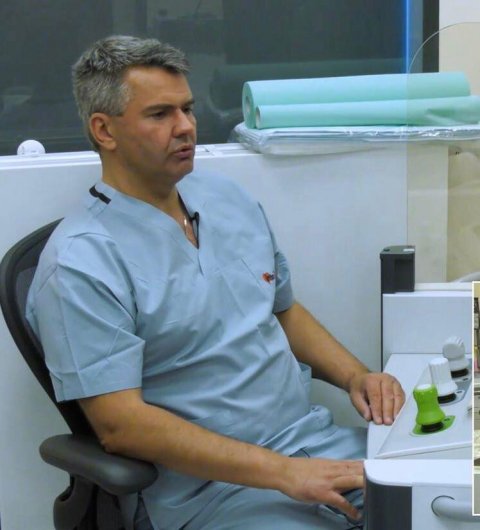
Adopting the technique for patients at his centre in March 2021, he outlined the benefits for the cardiologist, medical team and the patient. The cockpit console, which controls the robotic instruments, can be in the operating theatre, the cath lab or a separate control area, with only one assistant needed close to the patient to change devices and wires with headset communication between the two areas. A degree of automation is also available for wire manipulation and balloon or stent delivery. “The benefits we see,” explained Professor Dudek, “is that there is almost no radiation exposure, and a dramatic reduction of operator fatigue due to not having to wear heavy aprons. There is also precise evaluation of coronary artery lesion length, which is much more precise than colleague assessment, and precise positioning of stents, especially for ostial lesions and for long lesions with minimal overlap.”
We are going towards a new era that is a paradigm shift in interventional cardiology, with less radiation exposure, artificial intelligence and more precision
Dariusz Dudek
Robotic manipulation, he continued, gives more precision compared to the manual technique, particularly with guidewire navigation. “With this completely new technology, it is the time to change the traditional cardiology era and make the next step,” he said. “It is now time for the cath lab of 21st century.” That approach would see a greater focus on image-based pre-procedural planning via CT, robotic-assistance, and the ability for remote procedures. “This is the cath lab of the future,” said Professor Dudek. “We are going towards a new era that is a paradigm shift in interventional cardiology, with less radiation exposure, artificial intelligence and more precision.”
Professor Bonaros from Innsbruck Medical University, Austria, reflected on advances in robotic cardiac surgery, and developments in techniques, equipment and instrumentation, over the last two decades. Today’s systems, he explained, offer a range of automation from no automation with the procedure solely reliant on human control and guidance, through partial automation with human back-up, to full automation and a fully-automated smart vehicle capable of operating in any circumstances. He said robotic cardiac surgery remains complex, primarily due to the use of the heart-lung machine supported by a perfusionist.
Giving examples of cases, demonstrating the degrees of manipulation of the instrumentation, particularly with the flexibility of the endowrist technology, and levels of 3D visualisation, he said robotic cardiac surgery procedures include coronary surgery, mitral valve surgery and procedures for congenital conditions. Professor Bonaros said: “I think the future of robotic cardiac surgery is very interesting, but it is important to support it with training, with simulators. There are difficulties in implementation, such as costs, and this is the reason why robotic cardiac surgery has not boomed until now, but I think it is an opening market.”
Profile:
Dariusz Dudek is President of the European Association of Percutaneous Cardiovascular Interventions of the European Society of Cardiology (EAPCI ESC), from the Department of Clinical Cardiology and Cardiovascular Interventions at the University Hospital in Krakow, Poland, and a Professor of the Institute of Cardiology at the Jagiellonian University in Krakow, where his key areas of research are acute myocardial infarction, antiplatelet and antithrombotic drugs and complex PCI. An experienced percutaneous valve interventionist, he started the first TAVI procedure in Poland in 2008, and has contributed extensively to the scientific literature within those fields. Professor Dudek is on the Executive Board of the Congress Programme Committee of the Polish Cardiac Society since 2011 and also Director of the New Frontiers in Interventional Cardiology annual meeting.
06.01.2022



